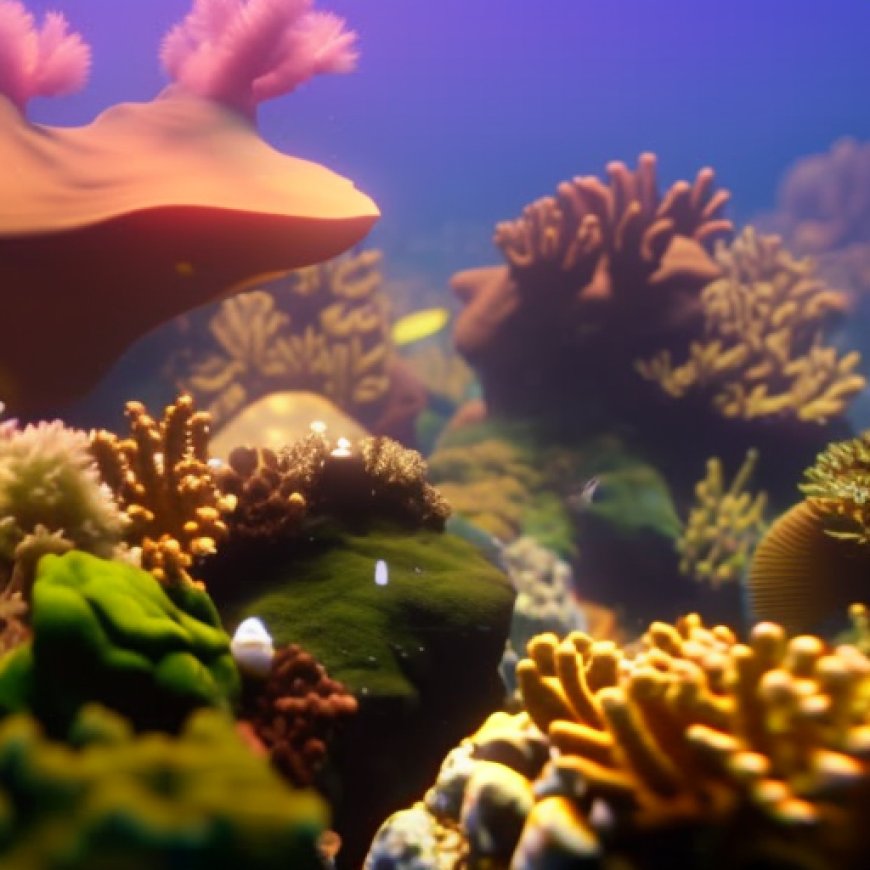‘Forever chemicals’ are getting into ocean ecosystems, where marine life dine
'Forever chemicals' are getting into ocean ecosystems, where ... WUWF


PFAS Contamination in Coastal Environments and its Implications for Sustainable Development Goals
Introduction
PFAS, also known as “forever chemicals,” have raised health concerns nationwide. These chemicals are not only a problem in drinking water but also contaminate various environments such as septic systems, landfills, airport runways, and farm fields. The presence of PFAS in streams that discharge into ocean ecosystems poses ecological and human health implications.
Research on PFAS Risks in Coastal Environments
As environmental analytical chemists at Florida International University’s Institute of the Environment, we study the risks associated with persistent PFAS pollutants in coastal environments. The ability of PFAS to enter the food chain and accumulate in marine plants and animals, including fish consumed by humans, highlights the urgency to address the spread of these chemicals.
Tracing PFAS Contamination in Biscayne Bay
In a recent study, we traced the origins of PFAS contamination in Miami’s Biscayne Bay to identify strategies for reducing harm. Our research focused on identifying hotspots of PFAS around urban canals, particularly the Miami River, Little River, and Biscayne Canal. These canals were found to be major point sources contributing to PFAS presence in offshore areas of the Atlantic Ocean.
Understanding PFAS and Their Sources
PFAS, which stands for perfluoroalkyl and polyfluoroalkyl substances, are human-made contaminants that have been used for over 50 years. They are commonly found in personal care products, water-repellent coatings, adhesives, and firefighting foams. The widespread use of PFAS-containing products has led to their accumulation in the environment, including aquatic ecosystems.
How PFAS Enter the Marine Environment
Our research revealed that sewage contamination from failed septic systems and wastewater leaks in urban areas is a major source of PFAS in Biscayne Bay. Additionally, the predominance of 6-2 FTS, a fluorotelomer PFAS used in firefighting foam, in the Miami River indicates contamination from military and airport facilities. We used a model to predict the dispersion of PFAS through ocean currents, showing higher concentrations near canals and decreasing as water becomes deeper and more saline.
Risks to Marine Organisms
The levels of PFOS and PFOA, two types of PFAS, in our study were below the advisory levels set by the Florida Department of Environmental Protection for human health exposure. However, these levels might not adequately protect human and marine life due to the accumulation of PFAS through the food chain. Pelagic fish that inhabit surface waters, such as mackerel, tunas, and mahi-mahi, are at the highest risk.
The Need for Guidelines and Action Plans
Many types of PFAS identified in our samples are not regulated, and their potential toxicity is unknown. We emphasize the importance of federal and state agencies developing guidelines and implementing action plans to protect both people and aquatic life in Biscayne Bay.
Individual Actions to Reduce PFAS Contamination
Given the persistence and widespread use of PFAS, it is crucial for individuals to limit their use of PFAS-containing products to reduce their entry into the marine environment. Common products to watch out for include Teflon nonstick cookware, fast food and popcorn packaging, water-resistant clothing and cosmetics, and treated carpets.
Conclusion
Addressing PFAS contamination in coastal environments is essential for achieving the Sustainable Development Goals (SDGs), particularly Goal 14: Life Below Water. By understanding the sources of PFAS and their impacts on marine ecosystems, we can develop effective strategies to mitigate harm and protect both human and aquatic life.

Join us, as fellow seekers of change, on a transformative journey at https://sdgtalks.ai/welcome, where you can become a member and actively contribute to shaping a brighter future.







